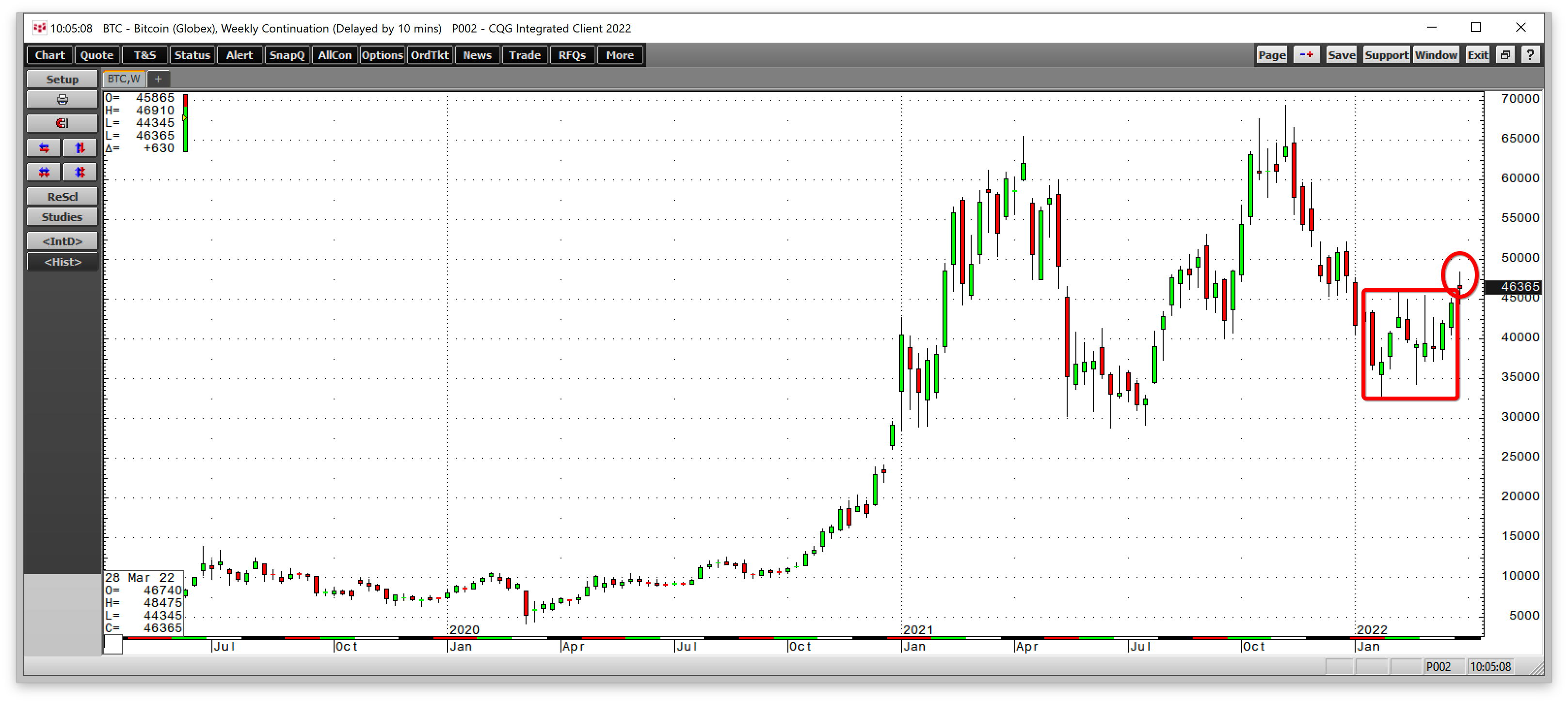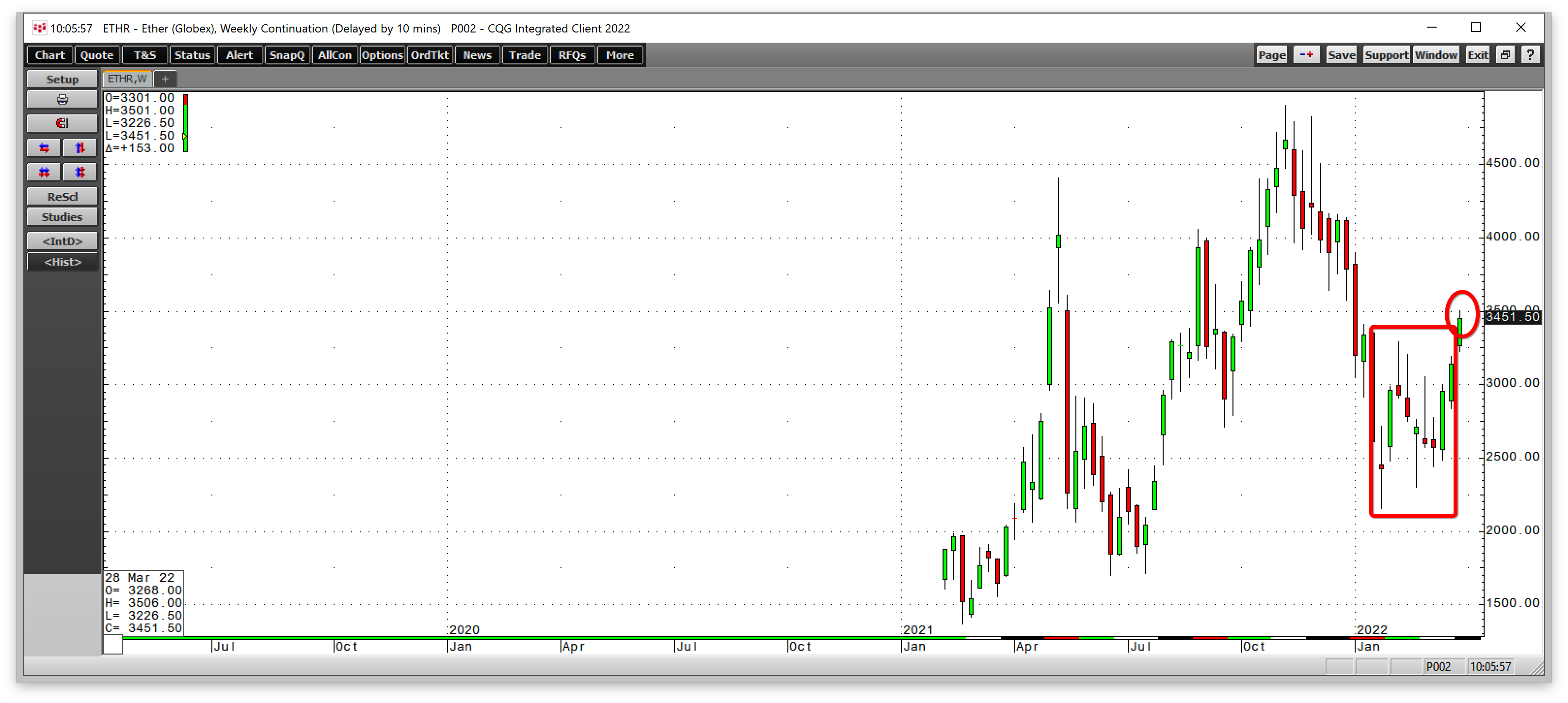This article was written exclusively for Investing.com
- Ideological bifurcation ends globalism
- The dollar is the world’s reserve currency
- Three signs the dollar is not what it used to be
- A decline of the reserve currency and fintech support alternatives
- Bitcoin and Ethereum are the leaders, and they broke out to the upside last week
Controlling the money supply is critical for governments. A nation’s power comes from its military and control of the financial system. Until the end of World War II, the British pound was the world’s reserve currency. In 1945, the US dollar replaced the pound after the decline of the British Empire.
For more than three-quarters of a century, the US dollar has been the foreign currency instrument that is a tool for cross-border transactions and money reserves for countries worldwide. The economic and political stability of the United States made its legal tender the currency of choice.
Meanwhile, the dollar has been a fiat currency since the early 1970s, when President Richard M. Nixon ended the gold standard. Since then, the dollar’s value as a legal tender comes only from the full faith and credit in the US.
In 2008, a white paper outlining blockchain technology and a cryptocurrency, Bitcoin, was the birth of the technological revolution in finance. As more cryptos burst on the scene, fintech’s evolution lifted cryptocurrency values to lofty levels, encouraging a speculative frenzy.
Over recent years, many factors have led to the decline of the full faith and credit of the US dollar and other fiat currencies. In 2022, a watershed event that weighs on the dollar’s role could be highly supportive of alternative means of exchange, including cryptos.
Ideological bifurcation ends globalism
Was Feb. 4, 2022 a watershed event in history?
The handshake between China’s President Xi and Russia’s leader Vladimir Putin was far more than a $117 billion trade agreement. The “no-limits” support pledge formed an alliance that bifurcated the globe. The handshake set the stage for Russia’s invasion of Ukraine and could be a prelude to Chinese reunification with Taiwan.
Over the past years, the world has been moving towards globalism in the financial system. After the Feb. 24 invasion, sanctions on Russia and Chinese support changed the economic landscape. Globalism may have supported cryptocurrencies growth over the past dozen years, but the bifurcation could turbocharge the burgeoning asset class.
Ideologically, globalism made Bitcoin, Ethereum, and other cryptocurrencies potential means of exchange that transcended borders. Bifurcation can increase the demand for currencies that remove the control of the money supply from governments.
Governments can pursue political agendas by increasing or decreasing the money supply by issuing more legal tender or removing it from the financial system to their heart’s content.
Cryptos return the power to a growing audience that rejects government interference as they derive value solely from bids and offers for the digital currencies that have no ties to any government or any political ideology. Cryptos are libertarian forms of money that reject government interference.
The dollar is the world’s reserve currency
The US dollar has been the world’s reserve currency since the end of World War II, having met the requirements for a reserve currency by being the world’s wealthiest nation with the most stable political system.
Countries worldwide hold dollars for cross-border transactions and as reserves. Free convertibility of the US currency is another benefit of the dollar. While China’s economy is nipping at the US’s heels for a leadership position, the yuan reflects the Chinese political ideology and is not freely convertible into other world currency instruments.
China is attempting to challenge the dollar for reserve currency status as it has rolled out a digital yuan, embracing blockchain technology. China may be far ahead of the US in the race for a digital currency, but convertibility and Beijing’s political system remain critical issues for the yuan. Time will tell if China can address the roadblocks to ubiquitous yuan acceptability.
Three signs the dollar is not what it used to be
While the yuan’s role in the world has risen, the US dollar’s is declining. Three factors are signs that the reserve currency status could be in jeopardy:
- The trade deal between Russia and China removed the dollar from the equation. Russia had been building its euro and gold reserves and decreasing its holdings of US dollars. China has been building its domestic gold production to build reserves which increases the world’s oldest means of exchange at the expense of the US currency.
- Saudi Arabia and Nigeria, two of the world’s leading oil producers, have been negotiating to sell China crude oil for yuan. The dollar has been the benchmark pricing mechanism for crude oil and most other commodities, making the exchange for yuan a significant event. Russia recently told European countries it would only sell energy (and perhaps other commodities) for rubles, forcing Europe to buy the Russian currency with euros and other foreign currencies, supporting the ruble. The trend away from dollar-based commodity prices weighs on the dollar’s role as the global reserve currency.
- US inflation is at the highest level in four decades. Inflation erodes the dollar’s purchasing power. US political division has increased dramatically over the past years. Abraham Lincoln said, "A country divided against itself cannot stand." The economic condition and political discord weigh on the dollar’s value.
The bottom line is that the US dollar is losing purchasing power and its role as the world’s reserve currency is in jeopardy after more than three-quarters of a century.
Decline of the reserve currency and fintech evolution support alternatives
The decline of the US dollar on the world’s stage opens the door for other means of exchange to take its place. Cryptocurrencies reflect the evolution of the fintech revolution. The dollar’s loss could result in gains for cryptocurrencies. Moreover, as cryptocurrency prices rise, it could reignite the speculative frenzy from trend-following traders and investors.
Bitcoin and Ethereum, the crypto leaders, rose to record highs on Nov. 10, 2021, and they found bottoms on Jan. 24, 2022
Bitcoin and Ethereum are the leaders, and they broke out to the upside last week
Bitcoin and Ethereum have spent the past two months consolidating after the rise to record peaks in mid-November and plunge to lows in late January. 
Source: CQG
The chart highlights the pattern of lower highs and higher lows from Jan. 24 through the week of Mar. 21. During the final week of March, Bitcoin broke higher from the wedge pattern, reaching a peak of $48,475 and closing the week over the $46,000 level.

Source: CQG
Ethereum followed the same pattern, breaking out from the narrowing wedge pattern and reaching a high of $3,506 last week. Ethereum was at the $3,450 level on Friday, Apr. 1.
Time will tell if Bitcoin and Ethereum will continue to move higher after the technical break above the first technical resistance levels. The decline of the US dollar’s position as the world’s reserve currency will not occur overnight, but the trend is emerging. Meanwhile, cryptos will likely benefit from the trend, and higher highs could be on the horizon.
Fiat currencies derive their value from the full faith and credit in the governments that issue the legal tender. Many crypto opponents argue the burgeoning asset class has no tangible backing, but that is no different than traditional fiats. Moreover, a decline in faith and credit in governments could be very bullish for crypto demand.
Which stock should you buy in your very next trade?
AI computing powers are changing the stock market. Investing.com's ProPicks AI includes 6 winning stock portfolios chosen by our advanced AI. In 2024 alone, ProPicks AI identified 2 stocks that surged over 150%, 4 additional stocks that leaped over 30%, and 3 more that climbed over 25%. Which stock will be the next to soar?
Unlock ProPicks AI
